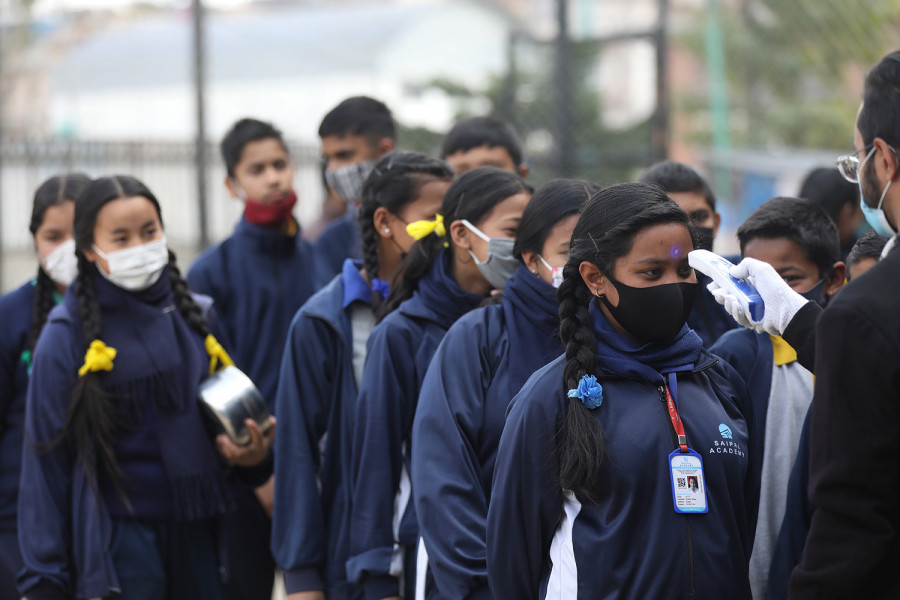National
Cabinet endorses guidelines for reopening schools
Local governments, however, say it might be too risky to open schools at the moment given the rising number of Covid-19 cases in the country.
Binod Ghimire
In a clear case of lack of coordination between different tiers of governments, the Cabinet has cleared the path for schools to resume classes even as local governments continue to impose lockdowns amid rising cases of Covid-19.
The Cabinet last week endorsed the School Resumption Working Guideline which allows the resumption of schools provided that they coordinate with representatives of the local government concerned, teachers unions and representatives from the school management committee.
“The main objective of the guideline is to clear the way to reopen schools that have remained closed due to the threat of the Covid-19 or because they were converted into quarantine or isolation centres,” reads the guidelines.
The Cabinet’s clearance comes at a time when local governments in the Capital itself want a lockdown to contain the spread of the contagious disease.
Schools and colleges across the country have remained shut since March 18 due to the coronavirus pandemic. The country’s 36,000 schools, including 29,000 government-funded ones, haven’t reopened since the country went into a full lockdown on March 24 to contain the spread of the virus.
As per the guidelines, local governments should start the resumption process from areas relatively unaffected by the pandemic. They can opt for classes to be run in two shifts in the schools with large numbers of students, according to the guideline.
The guideline makes it mandatory for all schools to follow safety guidelines prescribed by the government. As per the guidelines the respective local governments are responsible for providing masks to the students who come from poor families.
“Not all local governments are facing severe threat of the pandemic,” said Deepak Sharma, spokesperson for the Ministry of Education. “In-person study can begin in the places with no or lower threat of the coronavirus.” He said the teaching-learning process would be effective if the students get to learn by directly interacting with their teachers.
Students, as schools remain closed, are learning through different virtual learning platforms. However, different studies suggest that such forms of learning have been ineffective. According to the government’s Economic Survey for the fiscal year 2019-20, among the 29,707 public schools, only 8,366 have access to a computer while the number of schools that can offer information technology-based study with internet connectivity stands at 3,676 (just 12 percent).
With a large number of students being left out of virtual learning, the government has announced it will provide free sim cards and internet service to those who don’t have access to or can’t afford online study. Sharma said they plan to take virtual and in-person study together.
Against the plans of the federal government, officials from the local governments say it is not possible to resume schools, at least in the Kathmandu Valley. Nanda Paudel, education officer at Kathmandu Metropolitan City, said resuming schools would be risky. “There are no signs of the threat of the pandemic subsiding. It would be risky to resume schools at this point,” he said.
The government has downsized the curriculum for the current academic session by around 30 percent with an aim to wrap up the current academic session by April. Students from grades 1 to 3 will have 690 hours of classes in total while students from grades 4 to 10 will be 848 hours, according to the Curriculum Adjustment Framework prepared by the Curriculum Development Centre.
As per government rules, at least 1,024 hours of classes need to be conducted in 190 days per academic year under normal circumstances.




 16.29°C Kathmandu
16.29°C Kathmandu










%20(1).jpg&w=300&height=200)




